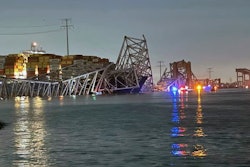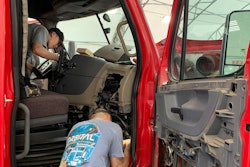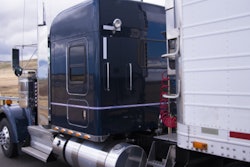Last year, a Zonar field services technician walked the fleet yard with the fleet manager during an onsite customer training. Toward the back of the yard was a large open space where several trucks were oddly parked. Each appeared to be damaged. He chided the area, saying it looked like a trucking graveyard. The manager replied with a frustrated sigh. “Sort of,” he said. “These are all vehicles involved in insurance litigation.”
After even a minor collision, fleets may have to spend anywhere from $16,000 to $75,000 for repairs in addition to the thousands lost to downtime for the sidelined truck. If the collision is severe, protracted insurance claims could sideline a vehicle for months or years. The total cost may also skyrocket based on any injury or fatality.
A lot of money is at stake for the plaintiffs, respondents, insurance companies and attorneys involved. Millions may be spent, saved or awarded. Fleet owners must take a proactive stance to reduce the possibility of litigation.
Now, with the rapid advancement and adoption of in-cab technologies, vehicle downtime due to litigation can often be reduced. According to reports going as far back as 2019, 58% of fleets report receiving insurance discounts from their use of in-cab cameras, and many have seen reductions in collisions overall.
The time has come for all fleets to put technology to work for their advantage in the case of a collision.
Dashcams for a comprehensive picture to exonerate drivers
Dual-facing cameras are essential in collision cases in which a driver is not at fault, as they may provide evidence that exonerates the driver. An early exoneration can mitigate the risks of plaintiff insurance claims and litigation.
Consider circumstances in which a third party is at fault. The driver responded exactly as trained, but there are no witnesses. While insurance adjusters may be able to piece together facts based on the damage and roadside photographs, the opposing party’s claim may place undue blame on the truck driver. The plaintiff may not have malicious intent, but recollections of the collision or unfortunate determinations by adjusters could alter a borderline case into one in which the fleet is liable.
Now consider the same circumstance, but the truck is outfitted with dual-facing cameras. Front-facing cameras are helpful, but they provide only a narrow view. A driver-facing camera provides a crucial perspective of the event, including defensive maneuvers and split-second personal safety decisions that are otherwise unaccounted for.
Driver exoneration can even occur at the scene of the accident by allowing law enforcement to view the footage if circumstances and timing permit. Having a law enforcement report in hand, written at the scene, provides exceptional exculpatory evidence for drivers and fleets.
Data Insights from smart fleet management tech
Camera footage combined with the additional information from fleet management platforms — data such as the speed and location of the truck at the time of the incident — makes the collision scenario clearer.
Comprehensive fleet management platforms help inform route changes on the fly, including avoiding preexisting collisions, high-traffic areas or otherwise dangerous or inefficient road conditions. As such, dispatch has a constant clear view of the GPS location of each vehicle in a fleet, transmitting information in real time about driver speed, fuel levels, mileage and the functionality of component parts.
There are hardly any metrics a truck produces that aren’t available in real time now with the right technology. Smart fleet management platforms consolidate this information on an in-cab tablet, making stored records easily accessible in the case of a collision. Revisiting a plaintiff’s story knowing the exact vehicle speed, location and health at the time of an event may clarify important details in a driver’s favor.
Tech recovers what “loss of use” can’t
Generally, when a third party damages a commercial vehicle, the fleet owner (or subrogated insurance carrier) has a right to sue for physical damages to the vehicle. Most states even provide the right to recover damages for loss of use.
However, fleet managers cannot necessarily rely on “loss of use” or “loss of profit” recovery mechanisms, such as insurance or direct litigation, as policies and statutes vary across states. “Loss of use” may be defined as anything from the actual vehicle damage price to the cost to rent a substitute vehicle.
Most states distinguish “loss of use” from “loss of profit.” Legal documents across states demonstrate the complexity of the issue in the difference of thousands of dollars in damages. For example, in Texas owners of wrecked vehicles may only recover the value of the lost vehicle. In Georgia, lost profits cannot be recovered if they’re speculative, making it difficult for new businesses without long track records to get money they may be owed.
The key takeaway? Technologies like dual-facing dashcams are increasingly affordable, easy to install and footage can be instantly accessed from anywhere with a WiFi connection. Technology can be a smart line of defense to exonerate drivers, and is a built-in deterrent for plaintiffs pursuing erroneous insurance claims.
These simple additions to a fleet’s safety program can save money and heartache for all involved, and prevent your fleet’s real estate from becoming a trucking graveyard.













